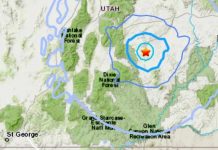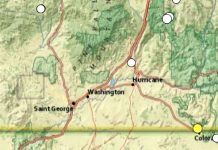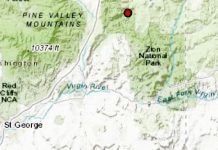
SOUTHAMPTON, England, April 27 (UPI) — After analyzing the sources and patterns of fluids flowing through the Alpine Fault in New Zealand’s Southern Alps, researchers determined that rainwater may play a role in triggering fault slips and earthquake ruptures.
“Large, continental-scale faults can cause catastrophic earthquakes, but the trigger mechanisms for major seismic events are not well known,” lead researcher Catriona Menzies, an Earth and ocean scientist at the University of Southampton, said in a news release.
“Geologists have long suspected that deep groundwaters may be important for the initiation of earthquakes as these fluids can weaken the fault zones by increasing pressures or through chemical reactions.”
Chemical analysis of the flux of geothermal fluids and mineral veins along the Alpine Fault suggest both deep-lying fluids from the mantle and rainwater meet in the rocky channels.
“Fluids are important in controlling the evolution of faults between earthquake ruptures,” Menzies explained. “Chemical reactions may alter the strength and permeability of rocks, and if enough fluid is present at sufficiently high pressures they may aid earthquake rupture by ‘pumping up’ the fault zone.”
Like California’s San Andreas Fault, New Zealand’s Alpine Fault is significant strike-slip fault capable of producing massive earthquakes. It hasn’t ruptured since the year 1717, which means it’s due rather soon.
The latest research, detailed in the journal Earth and Planetary Science Letters, shows the fault serves as both a barrier to and an escape route for fluids.
Lateral movement of precipitation and runoff down the mountain slopes is impeded by the fault line, while geothermal fluids from below use the fault as a vertical channel to rise toward the surface. When these two fluids meet, they can put extra strain on the fault.





